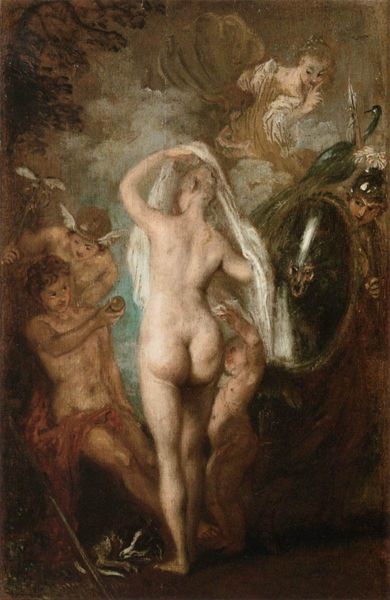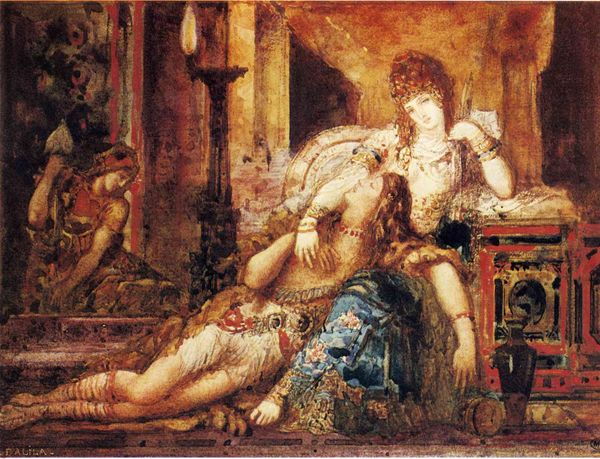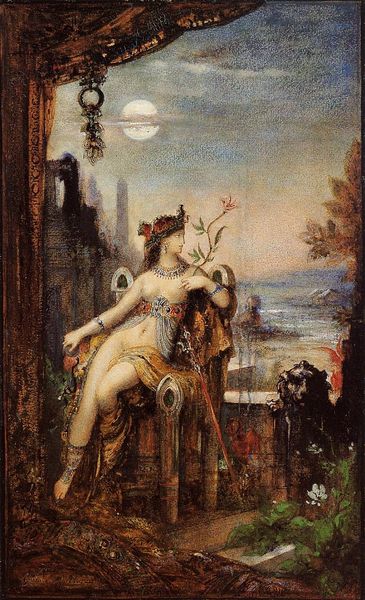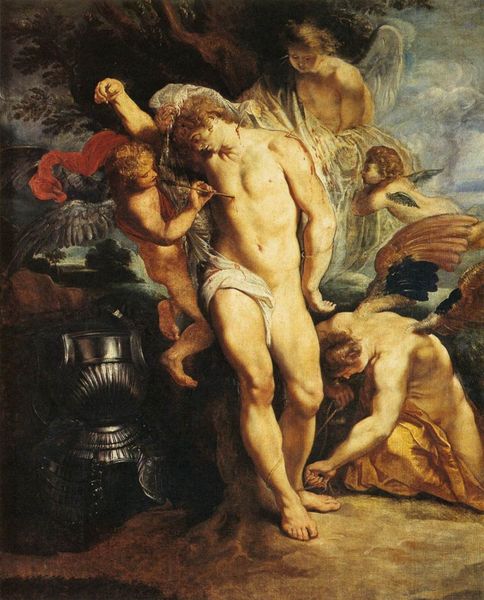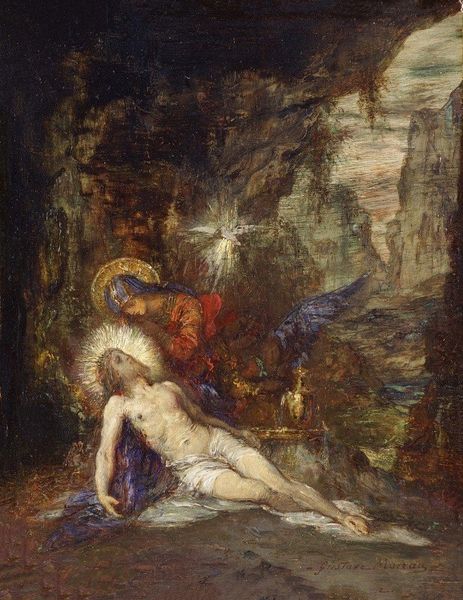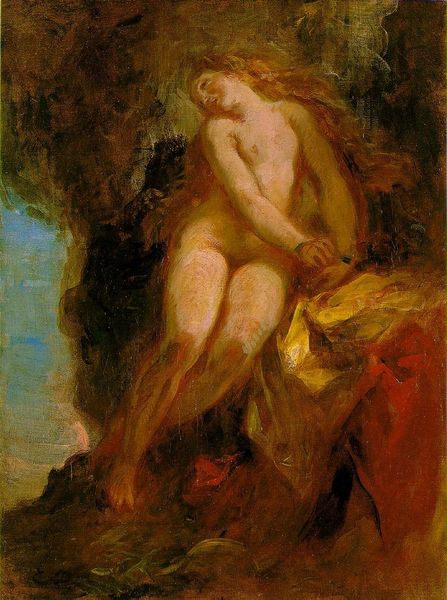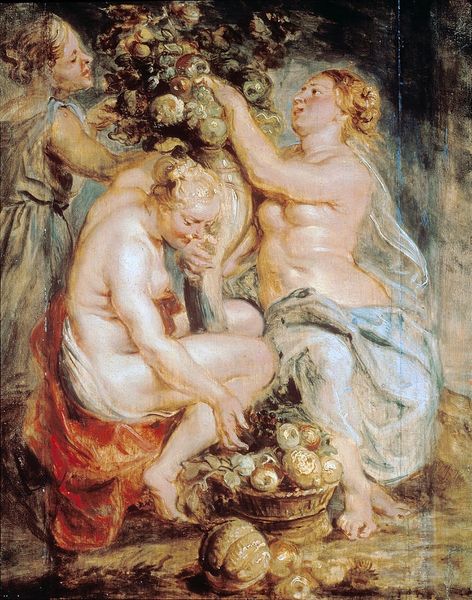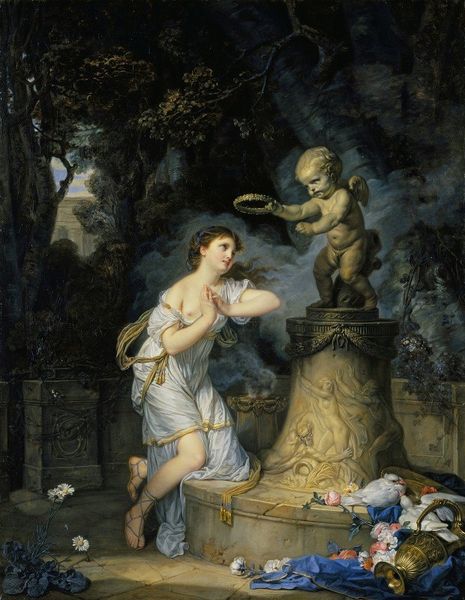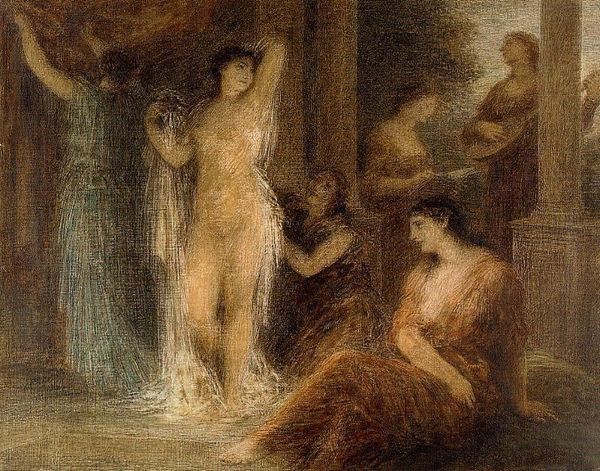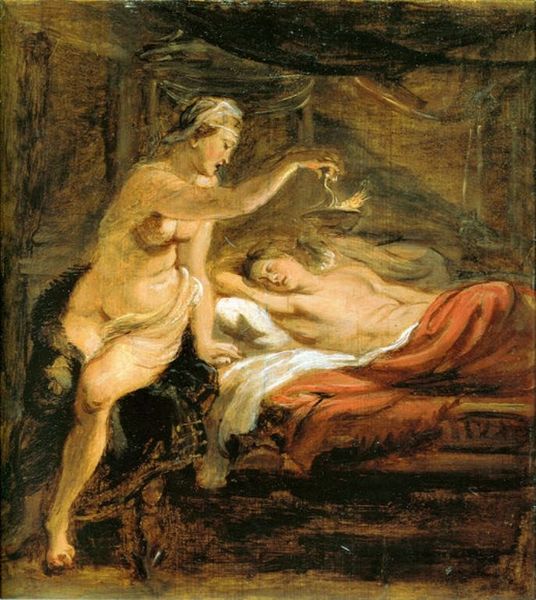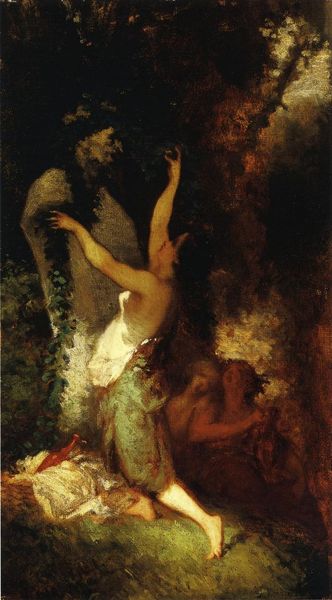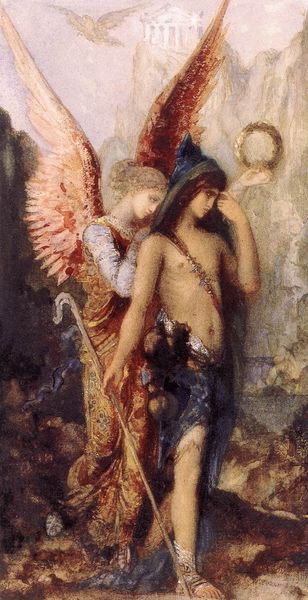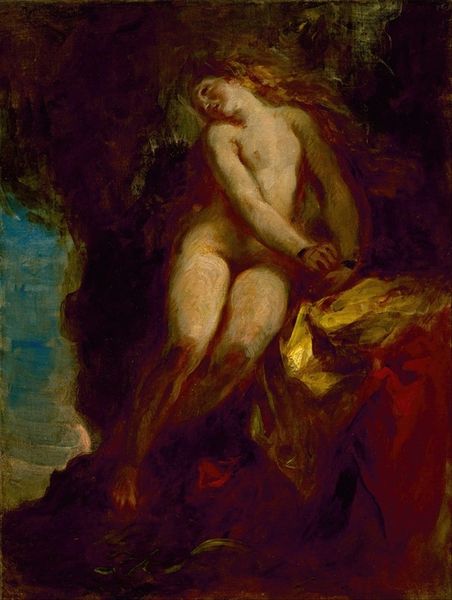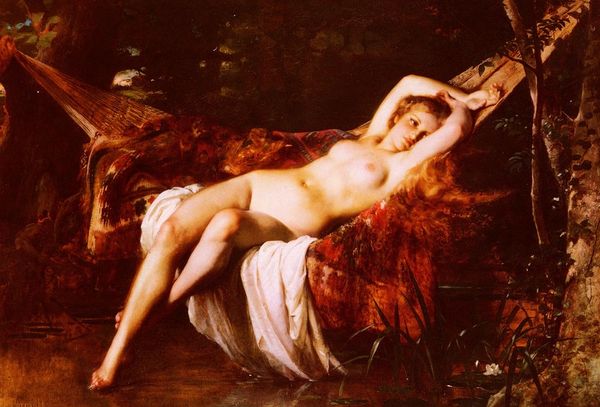
Dimensions: 137 x 242 cm
Copyright: Public domain
Curator: Gustave Moreau painted *The Execution of Messalina* in 1874. The medium appears to be oil on canvas, though he also explored watercolors with similar themes. It’s currently housed in the Musée National Gustave Moreau in Paris. Editor: My first impression is… shadowy melodrama. You feel the weight of secrets, scandal, and, of course, the execution itself. The colors are murky, almost bruised, like a play happening behind a veil. Curator: Yes, Moreau deliberately uses the techniques of Romanticism to heighten the emotional intensity. Considering the material context, remember that the late 19th century saw the rise of historical painting. Artists mined classical stories for their dramatic possibilities. Moreau seems particularly drawn to moments of extreme crisis and moral failing. Editor: Moral failing, indeed! Messalina had quite the reputation. Legend has it, she was a Roman Empress known for her, shall we say, enthusiastic... pursuit of pleasure. The execution itself wasn’t just about politics, but public morality too, right? Curator: Absolutely. These historical paintings were moral lessons dressed up as spectacle. Examining the source materials he might have referenced to create it, we can trace the history of Messalina from the histories of Tacitus, and how she served as a warning. It's worth looking at what the material record provides as a narrative. Editor: And the material choices enhance this! That stark contrast of the cold, almost luminous body of the statue compared to the warm flesh tones of Messalina and her lover, its an allegory in paint, the struggle between public facade and private transgression. You know, it makes me wonder, what kind of pigments was Moreau playing with to get that ghostly paleness? It's almost unreal, which I guess fits the drama. Curator: It also highlights the performative nature of power and its loss. To examine how pigments were constructed, bought and sold, informs our understanding of its intent as high art or part of a consumable historical moment. Editor: Very true. And from that perspective, seeing the history of the painting itself, where it was exhibited and by whom, makes you realize its not just about ancient Rome, its reflecting the anxieties and social controls of Moreau's time too. Curator: Precisely. Considering his method for layering on material until an allegorical and sometimes literal figure emerges gives form to Messalina's final acts on earth. Editor: So in the end, beyond all the moralizing, its still a damn compelling portrait of defiance staring down judgment. Curator: It is quite extraordinary that the materials and means come together to leave us asking questions even now.
Comments
No comments
Be the first to comment and join the conversation on the ultimate creative platform.
